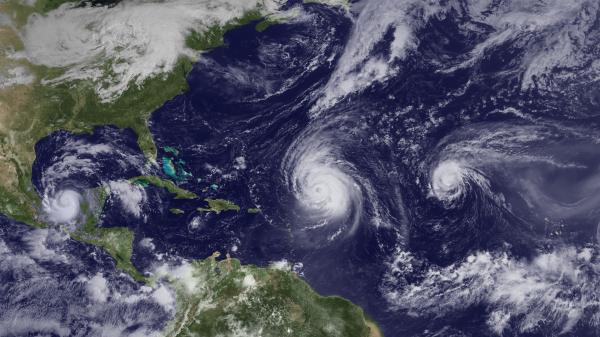
© NOAAHurricanes Karl, Igor and Julia (from left to right on Sept. 16) were part of the onslaught of Atlantic storms last hurricane season (2010).
Start preparing now: This year's hurricane season is expected to be an active one.
On the heels of an already
violent tornado season and other
wild April weather, the 2011 hurricane season may see 12 to 18 named storms and six to 10 hurricanes, an above-average season.
That's the forecast from the National Oceanic and Atmospheric Administration (NOAA), released today (May 19) for the Atlantic basin, which includes the East Coast, the Caribbean Sea and the Gulf of Mexico. If the forecast is anything like last year's, it should be taken very seriously.
"If you live along the Gulf Coast or live along the Atlantic Coast, you've had your notice," said Craig Fugate, director of the Federal Emergency Management Agency (FEMA). "It's going to be an above-average season."
The 2010 season was one of the busiest ever, with
12 hurricanes in the Atlantic - the second-highest number on record, tied with 1969 - and 19 named storms (which include
tropical storms and hurricanes) - a tie with 1887 and 1995 as the third-busiest on record. The 2010 forecast called for 17 named storms and 10 hurricanes.
An average Atlantic season produces 11 named storms, six hurricanes and two major hurricanes. The busiest season on record remains 2005, which saw 28 named storms, including
Hurricane Katrina. Five of last year's hurricanes reached major hurricane status (Category 3 or higher on the Saffir-Simpson scale of hurricane strength).

Comment: For a more accurate assessment of what's really going on with "global weirding" see our focus article: Connecting the Dots: Earth Changes Are Upon Us